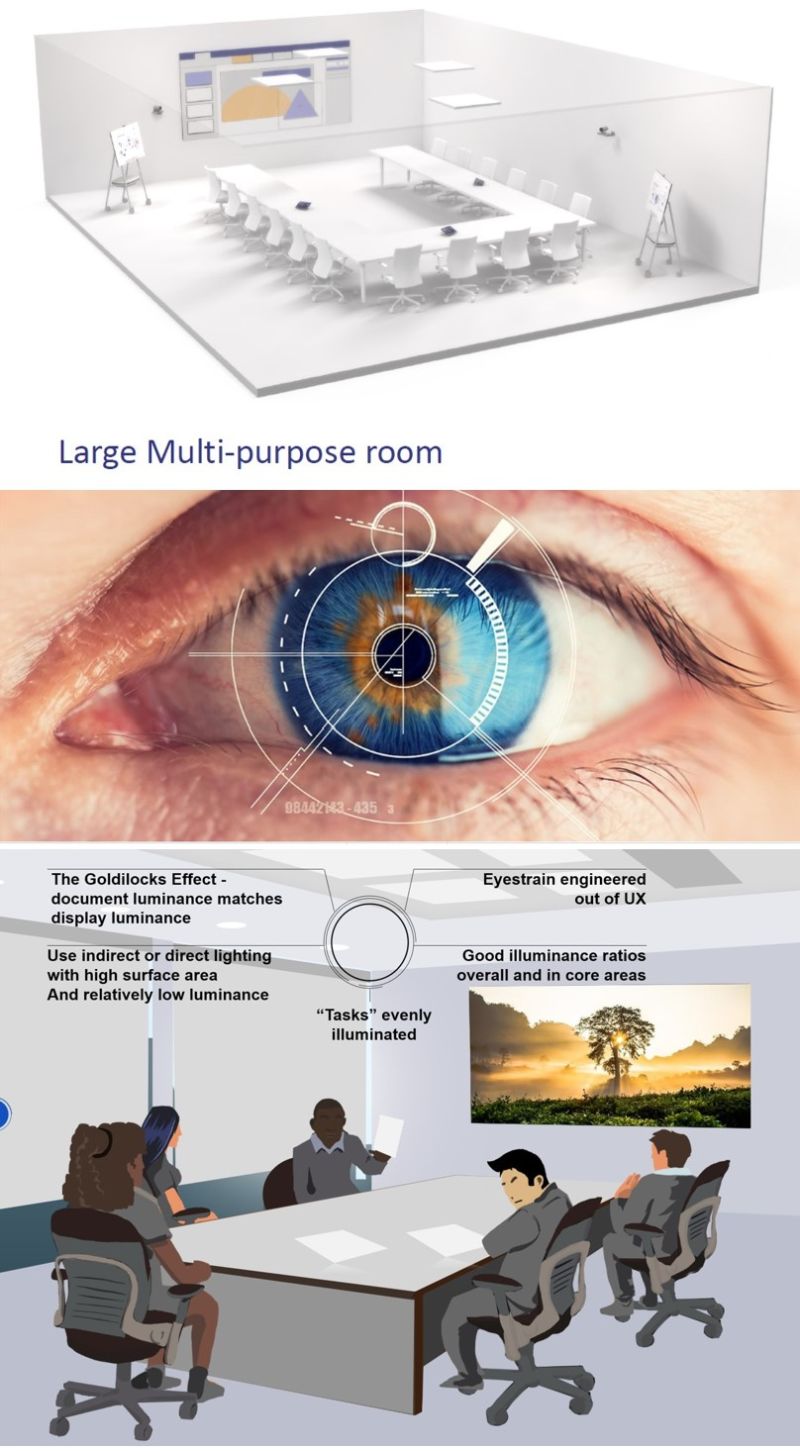Understanding human vision is a fundamental aspect of designing Microsoft Teams Rooms.
This is why display design and specification fails so often. Why?

Human vision is a combination of the opto-mechanical ‘camera’ that is the eye, coupled with a processing system whose complexity and speed are almost beyond comprehension.
From reacting to changes in colour temperature (Circadian Rhythm) to reflexively recoiling when a snake appears in your peripheral vision, the principle here is distinguishing between what can be seen - and how it is perceived.
Human perception to light is logarithmic. We can only generally perceive a change in light levels when they double or halve - which equates to a single shutter speed or f stop (aperture control, like our irises) on a camera.
Our eyes have to operate within an illuminance (ambient light) range greater than 1,000,000 to 1. We can read newspaper headlines by the light of a full moon - maybe 0.2 lux - yet have to operate well under bright cloudless daylight in excess of 100,000 lux.
Bringing it back to MTR design, this means that displays have to be specified for luminance (‘brightness’) - but not in isolation, otherwise asthenopia (‘eye strain’) can be accidentally designed into the room.
Such practices and provisions are part of my daily consulting life.

Posted: 25th November 2022